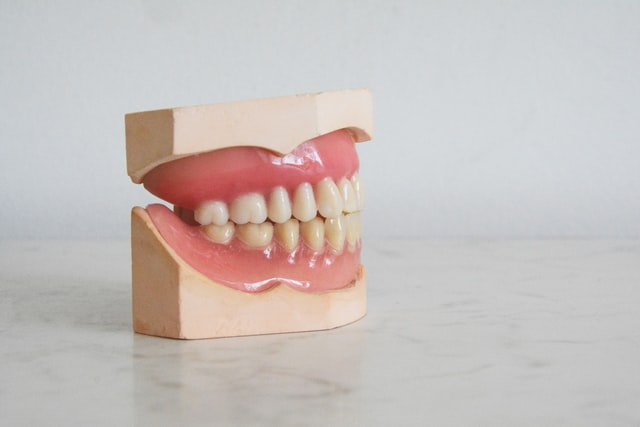Do you have a missing tooth problem? Gum disorder, tooth decay, and injury can lead to missing teeth. You can rely on a dental bridge to fill that gap. It’s typically false teeth on either side of the space. The bridge spans the gap that would otherwise become an obstacle if some intervention isn’t there to bridge the gap. Another situation could be that you don’t have a tooth due to a specific congenital condition. No matter what, you can rely on dental bridges to come to your rescue. But dentists would examine your oral condition first before recommending any process. Hence, it would be best to wait for their examination and suggestion.
Generally, the best candidates for this procedure are those having supporting healthy teeth on both sides of the missing tooth.
The features of a dental bridge
A typical bridge has abutment teeth and pontics. To create an abutment tooth, a dental professional will make crowns for the two teeth for each side of the missing tooth. These can be your natural teeth (although they can also be implants). To install the bridge itself, the dentist will place false pontics (or artificial teeth) across both sides of your gap. You would come across four options in a dental bridge – traditional fixed, resin-bonded, cantilever, and implant-based.
A traditional fixed bridge is famous; it consists of crowns and filler tooth or teeth. Crowns act like anchors for the bridge. The material used in this can be ceramics, metal, or porcelain. On the other hand, resin-bonded bridges help missing front teeth cases. These again come in metal, porcelain, and ceramic variety. As for implant variety, these are more like traditional fixed bridge options. They differ in the way of their placement. The dentist usually applies implants to fix the teeth instead of cementing them. Finally, a cantilever bridge can come in handy for someone who has teeth only on one side of the missing tooth.
Since clinics can offer the right options most suitable for your needs, you should follow their advice. They will know the best technology and material that can meet your demand. You can contact an Oyster Bay dentist offering dental bridges for clarity if you need to find out more about it.
Dental bridge procedures
Your dentist might recommend replacing one or more of your teeth with a dental bridge during an initial consultation. Dental bridges commonly replace missing teeth or teeth extracted due to trauma, decay, or gum disease. A standard bridge involves placing artificial teeth called abutments over the extraction site and across the gap. Your dentist will then use a mold or cast to create false teeth called pontics. They will place them on artificial roots at either end of the abutments. If you already have natural teeth available, instead of borrowing tissue on the gums, these can go under crowns to get cemented on your existing teeth and the span where the tooth once sat.
The dentist can take images of your teeth for inspection and mold during this process. Also, after installing the permanent bridge, they would ensure that all the adjustments are proper, so you don’t face any discomfort.
The suitable candidates for dental bridge and its advantages
A missing tooth can force surrounding teeth to move into the empty space. It can be upper and lower teeth. Due to this, you can encounter biting issues, chipped teeth, difficulties with chewing and eating, etc. When gaps start appearing in the mouth due to this shift in teeth, you can become conscious of how you smile. But you can get rid of these problems with dental bridges, which only your dentist can decide if that’s suitable for you or not. Once done with the procedure, you can take a sigh of relief for many years. You will not face any complications. The only risks to their life expectancy can be the deteriorating neighboring teeth or the cement or bonding.
Sometimes, a bridge can become loose due to any reason. However, if the supporting teeth are in good shape, the dentist can re-fix them with new bonding.
Care and maintenance for a dental bridge
The long-lastingness of this dental solution depends on how good and robust your other teeth are. You need to attend to your oral health to avoid gum ailments and tooth decay. Else, you can face the issue of tooth loss. You can care for your mouth well by brushing and flossing your teeth daily. Your dentist can guide you on the right way to clean your teeth. They can also recommend special floss that will be easy on your gums and bridges. It would be best to visit your dental clinic regularly to fend off any challenges. Eating a healthy diet of fibers, fruits, and veggies is also critical. At the same time, it can be best to avoid hard or chewy items like meat.
If you face any biting or chewing problems after doing everything to maintain your dental bridge, you may want to see your dentist for examination. Some common signs include inflammation, pain, bleeding, etc.
Common concerns around dental bridges
Some people believe it can be challenging to eat with dental bridges, while missing teeth can make it more uncomfortable. However, initially, you may want to take soft food items or smaller chunks until you become comfortable with the bridge. Then, people with missing front teeth often suffer from speech issues. But dental bridges can help here also.
Generally, people fear visiting a dental clinic, no matter the difficulty they face with their oral health. They continue living their life as usual until it becomes a must. Instead of allowing things to worsen, you can get yourself examined by an expert at the right time to avoid any significant problems. Even if there is something, early detection is always better than later or never. So, please don’t take any risks with it. Your dentists are just like your physicians. They test your oral condition, learn about your medical history, and suggest treatment after reviewing everything to improve your overall dental health.
Related Posts












